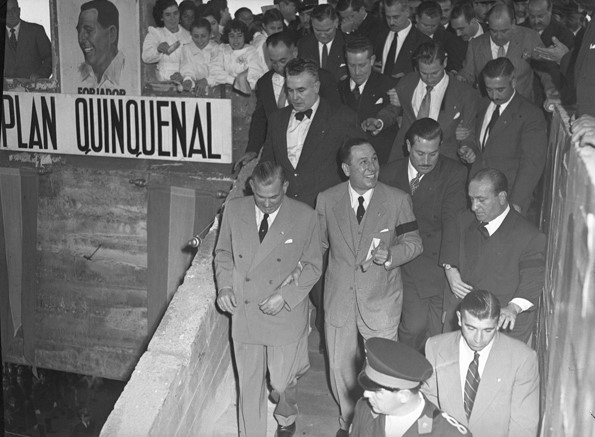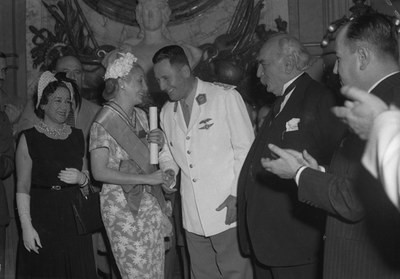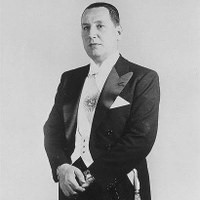Lobos, 1895 – Buenos Aires (Argentina), 1974
By María Seoane
Juan Domingo Perón was born on October 8, 1895, in Lobos, Buenos Aires Province. He was the second child of Juana Sosa Toledo and Mario Tomás Perón, a small landowner. After spending some years with his family in Patagonia, he lived with his paternal grandmother, Dominga Dutey, in Buenos Aires. In 1907, he enrolled in the Polytechnic School, and in 1911, he joined the Military Academy. As a cadet, he was part of the army’s fencing team. During the first presidency of the radical Hipólito Yrigoyen (1916-1922), he took part in the repression of workers’ mobilizations. In 1918, he was sent to Santa Fé, in the Chaco region, to observe the situation during the workers’ strike at La Forestal, a company dedicated to the exploitation of quebracho wood. The following year, he participated in the “Tragic Week,” the repression of a strike by metalworkers in Buenos Aires, which resulted in several deaths and hundreds of detainees. In 1920, he was transferred to the School of Non-Commissioned Officers at Campo de Mayo, where he had already gained a reputation as a caudillo. At the same time, he taught physical education at the Young Men’s Christian Association (YMCA). Between 1926 and 1928, he studied at the Superior War School, where he would later become a professor. In 1929, he met Aurelia Tizón (“Potota”), a young woman 13 years his junior from the middle class, with whom he married.
In 1930, he participated in Argentina’s first military coup, led by General José Félix Uriburu, which overthrew Yrigoyen. He obtained his first political position as secretary to the Minister of War. In 1936, he became the military attaché at the Argentine Embassy in Chile. His tenure nearly caused a diplomatic scandal due to his alleged purchase of Chilean military secrets. In 1938, his wife died of cancer. A year later, Perón traveled to Europe on a military mission to attend a mountain infantry training course in Italy. He became sympathetic to the rising fascist regimes in Italy and Germany.


In February of the following year, Perón was elected president with more than 52% of the votes and took office on June 4. This marked the beginning of a ten-year period during which his first two presidencies (1946-1952 and 1952-1955) followed the three main banners of Peronism – social justice, political sovereignty, and economic independence – but were also characterized by some authoritarian traits that angered the opposition, such as the concentration of power, the exaltation of his figure and that of Evita, and the persecution of political opponents. Eva played a fundamental role in consolidating Perón as a mass leader. During his ten years in office, Peronism sought – and largely succeeded – in implementing a criollo version of the welfare state. He nationalized the banking and railway systems, heavily promoted public works, and elevated the rights of workers, the elderly, and children to constitutional clauses. His economic policy materialized in two five-year plans: the first from 1947-1952, and the second for the following period, which he could not fully implement.
After being overthrown in 1955, Perón went into exile, first in Asunción, Paraguay, then in Panama, where he met María Estela Martínez (Isabel), whom he married in 1962, and from where he called for “civil resistance” to fight the Revolución Libertadora. He then exiled himself in Caracas, Venezuela – between August 1956 and January 1958 – in the Dominican Republic, where he stayed with Isabel until 1960, and finally in Madrid. During his exile, Perón maintained close contact with his followers, organized the Peronist resistance, and directed the vote in every election.
Although Peronism was banned, it remained the most important political force in the country. In Spain, dictator Francisco Franco received him with full honors. Perón first settled in Madrid and then in Puerta de Hierro. From there, he continued to be the leading figure of Peronism and the political and union opposition. He began to engage in dialogue with his former opponents, such as the radical Ricardo Balbín, which resulted in the 1970 agreement known as “The People’s Hour” (La hora del pueblo). At the same time, he made gestures toward the Peronist groups promoting armed struggle, such as the Montoneros. Between 1971 and 1972, the old leader received visits from politicians, unionists, businessmen, and military leaders. His personal secretary, José López Rega, managed his agenda. On November 17, 1972, after seventeen years in exile and a political showdown with military president Alejandro Lanusse, Perón returned to Argentina, where he stayed for almost a month and made political agreements with various sectors. Shortly after, he announced the presidential ticket of the Frente Justicialista de Liberación, composed of Héctor Cámpora and Vicente Solano Lima, which would go on to win. Perón’s definitive return to Argentina occurred on June 20, 1973, amid the internal struggle between the left and right wings of Peronism, which culminated in the Ezeiza Massacre – an armed clash between the two factions near the international airport.
To achieve unity within the movement, Perón ran in the September 1973 elections, and the ticket he formed with his wife won 62% of the vote. He assumed the presidency the following month. In his final months of life, the government gradually shifted towards more orthodox positions. On May 1, 1974, during a Workers’ Day rally in Plaza de Mayo, Perón insulted the Montoneros, who were questioning the presence of right-wing figures in the government, leading to a rupture between the youth and the leader. Two months later, old and ill, Perón passed away, and the presidency was handed over to Isabel and López Rega, who founded the right-wing terrorist organization known as Triple A (AAA). In 1987, his tomb at the La Chacarita Cemetery was desecrated: the hands of the corpse were severed. The culprits were never identified.



